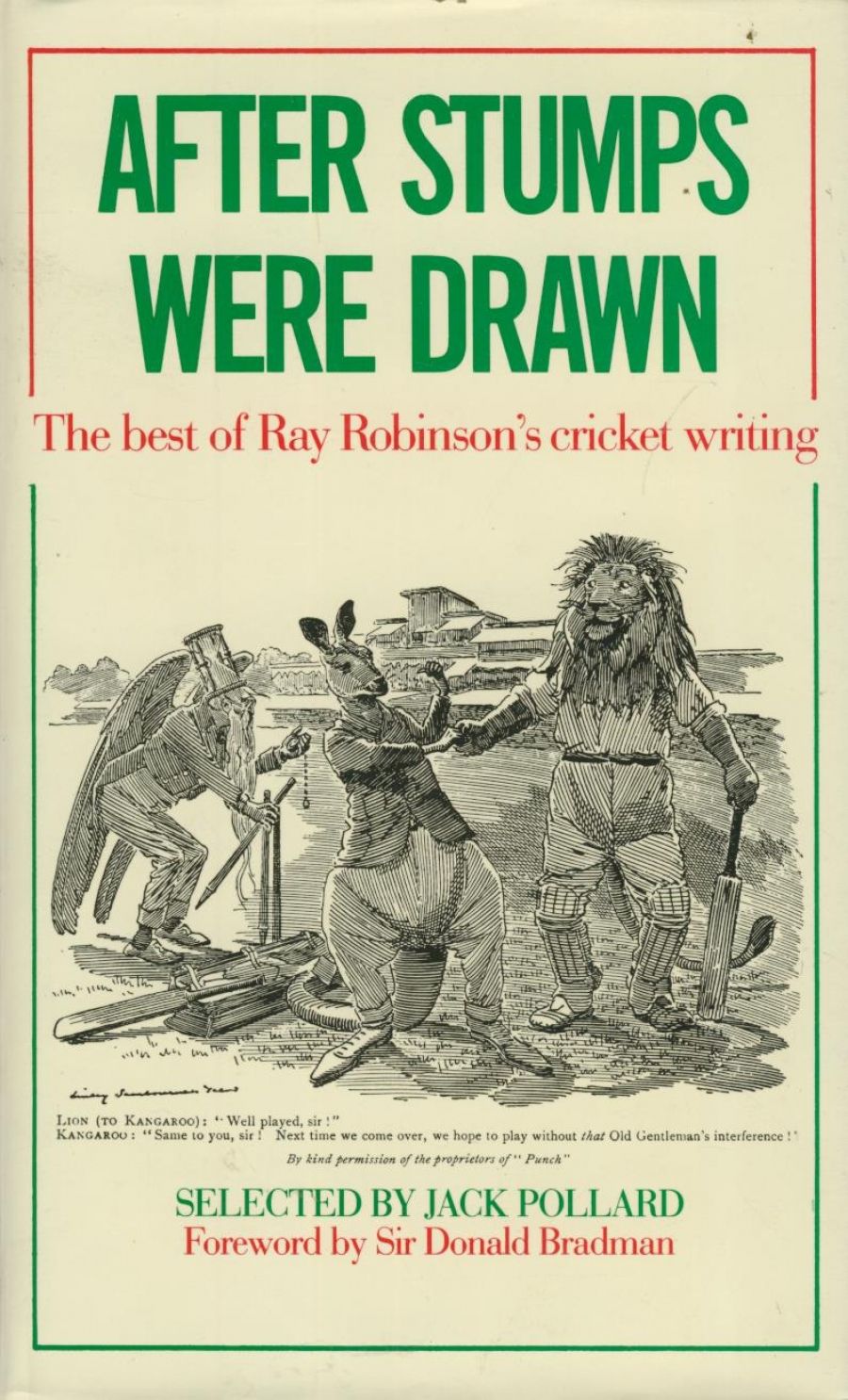
- Free Article: No
- Contents Category: Cricket
- Review Article: Yes
- Article Title: Eye on the Ball
- Article Subtitle: Retiring with a good average
- Online Only: No
- Custom Highlight Text:
After nearly a lifetime of giving pleasure to those who read about cricket, Ray Robinson died in 1982. This collection of thirty-one articles which previously had appeared in various publications over a span of sixty years, has been admirably selected and introduced by Jack Pollard. Moreover, it is accompanied by a graceful and generous foreword by Sir Donald Bradman. Some pieces are better known than others. Certainly are those which first appeared in Robinson's hardbacked books. What we must particularly thank Pollard for is collecting some of that writing which was first published in not so durable magazines or newspapers. This commemorative volume therefore should delight many.
- Book 1 Title: After Stumps Were Drawn
- Book 1 Subtitle: The best of Ray Robinson's cricket writing
- Book 1 Biblio: William Collins, $19.95 hb, 237 pp
The source of this delight lay partly in Robinson’s deep historical knowledge of. the game and its players. This selection, for example, ranges from a fine analysis of D.W. Gregory, Australia’s first cricket captain to an account of a game played before a violent angry crowd who had come to see a WSC ‘Supertest’ in Guyana. Secondly it lay in the immediacy of his narrative style. Here is Lawry batting in Calcutta with ‘three fielders crouched not far from his lean haunches, ready for any misjudgement of Bedi’s left-hand spin’. Or consider: ‘As Gover came up with his long run, all knees and elbows, Donnelly detected the shoulder movement that warned of a coming bouncer’. Surely, the reader here is almost on the field. Then one can turn to the descriptive style and see again the West Indian Spinner Valentine ‘coming around the wicket with four long-bent-kneed strides like Groucho Marx getting into a lift before the door closes.’ Of course, given the volume of Robinson’s output and the need to meet deadlines, at times he slipped. The occasional ball does race across the turf. Now and again it does crash into the fence and at least one in-dipper does destroy a timber-yard. These blemishes must be overlooked in a sporting writer who could note that ‘Arthur Mailey and Clarrie Grimmett were as different as it was possible for two short men to be’. There is perhaps one point, however, which I wish Ray Robinson had explained. Just where did Lindsay Hassett find a dry cleaner one morning in a small town amid the Derbyshire hills in 1938?


Comments powered by CComment